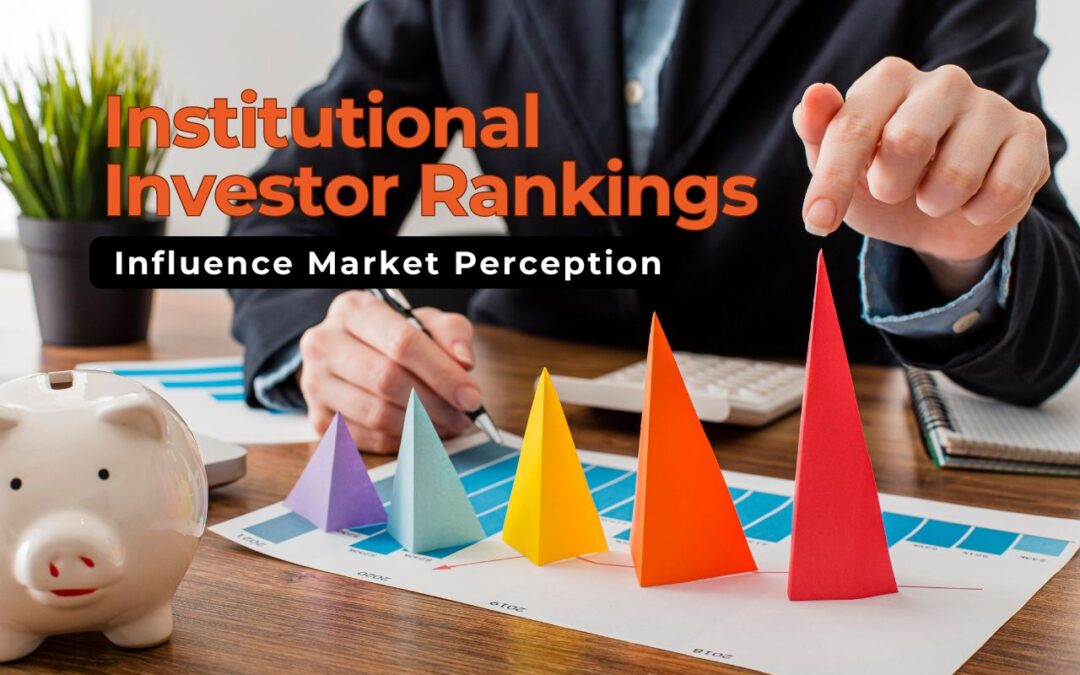In the intricate world of finance, institutional investors stand as some of the most influential players. Their movements, decisions, and reputations can shift markets, influence corporate governance, and sway public opinion. Among the many metrics that define the financial ecosystem, institutional investor rankings serve as powerful indicators not just of performance, but of trust, capability, and market sway.
These rankings are more than just accolades or placements on a list. They are signals that reverberate across trading floors, boardrooms, and investment communities. This article dives deep into how these rankings are created, how they impact perceptions within and outside financial circles, and the ripple effects they create in market behavior and decision-making.
What Are Institutional Investor Rankings?
Institutional investor rankings are evaluations of large investment entities—such as pension funds, mutual funds, hedge funds, insurance companies, and sovereign wealth funds—based on a variety of performance and operational criteria. These may include investment returns, risk-adjusted performance, assets under management (AUM), governance standards, and client satisfaction. Some rankings also take into account soft factors such as innovation, transparency, ESG (Environmental, Social, Governance) considerations, and influence within the investment community.
These rankings are usually compiled by research firms, industry analysts, and financial media. While they may vary in methodology, their role in shaping narratives in the investment world is consistent.
The Psychological Weight of Rankings in Finance
In the realm of financial markets, perception often drives reality. A high ranking acts as a signal of credibility and competence. It reassures other investors, stakeholders, and even corporate boards that a particular institution is not just surviving, but thriving.
Here’s how these rankings influence psychological behavior in markets:
- Investor Confidence: Retail and smaller institutional investors often look to top-ranked institutions for cues on where to allocate capital. Rankings thus create a halo effect, making high-ranked firms seem more trustworthy and secure.
- Recruitment and Talent Retention: Talented professionals prefer to work with top-ranked firms. These rankings act as employer branding tools that attract the brightest minds in finance.
- Client Acquisition: Institutional clients, such as endowments and foundations, use rankings to guide their selection of fund managers or investment consultants. A higher rank often translates to easier client acquisition.
- Market Buzz: Rankings can create media buzz, spotlighting firms in the financial news cycle. This exposure can attract more interest, which may translate into more capital inflow.
Influence on Investment Flows
One of the most direct ways institutional investor rankings influence market perception is through capital flows. Investors—especially those with limited internal due diligence capabilities—often rely on rankings as shortcuts for making decisions. This can result in large volumes of capital being directed toward top-ranked firms and funds.
A report published in recent years indicated that nearly 65% of institutional clients consider rankings and industry awards as one of the top five criteria when choosing asset managers. This shows that a high placement on a ranking list can significantly improve a firm’s ability to raise funds, while a poor ranking can hinder growth.
This behavior has a cascading effect:
- Top-ranked firms receive more inflows.
- They can then deploy more capital and potentially benefit from scale economies.
- This could boost returns, further solidifying their position in future rankings.
This feedback loop can create entrenched market leaders and make it harder for newer or smaller players to gain visibility, even if their performance is strong.
Shaping Corporate Governance and Engagement
Institutional investors are also major stakeholders in corporate governance. When a highly ranked institutional investor holds shares in a company, their opinion carries significant weight. This can affect:
- Executive compensation strategies
- Environmental and social policy decisions
- Voting on mergers, acquisitions, and other strategic moves
Companies often adjust their behavior based on the type and influence of their institutional shareholders. High-ranking investors are seen as thought leaders and ethical benchmarks. Therefore, their involvement in shareholder meetings or corporate initiatives can validate or question a company’s governance practices in the public eye.
Impact on Public Market Sentiment
Public markets are highly sensitive to narratives. A change in the ranking of a major institutional investor can move markets in multiple ways. For example:
- If a once top-ranked investor drops significantly, the market may perceive this as a sign of internal turmoil or failing strategy, potentially leading to stock sell-offs in firms heavily backed by that investor.
- Conversely, a firm entering the top tier for the first time may attract new followers and capital, as investors assume the firm has made major improvements in performance or strategy.
This perception can trickle down into retail investor sentiment as well. In fact, studies have shown that retail investors mimic institutional investor behavior at a growing rate, with up to 40% of retail fund flows correlating with institutional trends.
Media and Analyst Behavior
Financial media and equity analysts often rely on rankings as a foundational tool for commentary and forecasting. A top-ranked investor’s portfolio changes may trigger stories, investor notes, and trend analyses. This further magnifies the importance of the rankings and embeds them into the broader financial narrative.
For example, if a highly ranked institution increases its stake in a particular sector, analysts may interpret this as a bullish signal for that industry. Media coverage then amplifies the sentiment, leading other investors to jump on the trend—sometimes creating bubbles or overvaluations.
Influence on Private Markets and Startups
While rankings are typically more visible in public markets, they also play a crucial role in private investments. Venture capital and private equity firms often look to top institutional investors for validation. A ranked investor entering a startup’s cap table can significantly increase its perceived value and credibility.
Startups backed by these institutions find it easier to raise additional rounds, attract top talent, and negotiate favorable terms. The halo effect of institutional rankings thus permeates both public and private markets.
Risks of Overreliance on Rankings
While rankings offer a quick snapshot of institutional performance and reputation, overreliance can be dangerous.
- Subjectivity in Methodologies: Not all rankings are based on the same criteria. Some may place greater emphasis on short-term returns, while others weigh ESG policies more heavily. Investors who don’t dig into the methodology may get a distorted view of what the ranking really means.
- Performance Doesn’t Always Equal Strategy: High returns may not necessarily mean a sound or sustainable strategy. Sometimes, short-term bets or high-risk trades can skew performance metrics, temporarily boosting rankings.
- Reputational Fragility: Because rankings are so visible, even small negative news or drops in performance can lead to a sharp fall in rankings, triggering panic or outflows.
Therefore, market participants must balance ranking information with fundamental research, due diligence, and long-term perspectives.
The Rise of ESG and Ethical Investing
A recent shift in the investment landscape has placed more emphasis on ESG-oriented institutional investor rankings. In fact, recent studies show that more than 70% of institutional investors globally now consider ESG factors as critical when evaluating investment options.
Rankings that integrate ESG criteria are reshaping market perception by rewarding firms that prioritize sustainability, ethical governance, and social impact. Investors increasingly associate such firms with long-term stability and responsible capitalism. This has added a new dimension to how rankings influence perception—not just about profitability, but about purpose.
Conclusion: More Than Just a Number
Institutional investor rankings are much more than leaderboard statistics. They are powerful perception shapers that influence how money moves, how companies behave, how media tells stories, and how individuals invest. From building trust with clients to swaying market sentiment, rankings play a pivotal role in the global financial ecosystem.
However, while rankings offer valuable insights, they should be seen as tools—not gospel. True market understanding comes from combining these insights with a nuanced analysis of strategy, governance, innovation, and risk management. In a world where perception often drives reality, the ability to critically evaluate the factors behind a ranking can provide a significant edge.
As financial markets become more complex and interconnected, the influence of institutional investor rankings will only grow. Understanding their power—and their limitations—is essential for anyone navigating the world of investment today.













